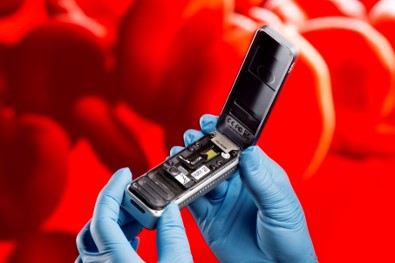
German and UK researchers cut time to sepsis diagnosis
Researchers from German Fraunhofer IGBI have used next-generation sequencing (NGS) to diagnosis sepsis from tiny amounts of microbial DNA in the blood.
In the Journal of Molecular Diagnostics, a research team led by Kai Sohn from Fraunhofer IGB (Stuttgart, Germany) describes the new real-time NGS-based technique that allows an accurate diagnosis of sepsis-causing agents within a few hours of drawing blood. Current diagnostic tests are culture- or PCR-based, which are neither fast nor specific enough to provide timely, critically important information.
"With up to 50 million incident sepsis cases and 11 million sepsis-related deaths per year, sepsis represents a major cause of dealth," explained co-lead-investigator Thorsten Brenner, MD, vice head of the Department of Anesthesiology, Heidelberg University Hospital, Heidelberg, Germany. "Reliable and early identification of the pathogen enables rapid and the most appropriate antibiotic intervention, thereby increasing the chance of better outcomes and patient survival. Currently, standard-of-care diagnostics still rely on microbiological culturing of the respective pathogens, which rarely provide timely positive results."
The investigators described a system that utilized NGS of microbial cell-free DNA to detect blood pathogens within 28 hours. However, their ultimate goal was to develop an even faster test to expedite treatment. To overcome this limitation the investigators established a diagnostic workflow based on 3rd generation nanopore sequencing of microbial DNA. Normally, nanopore sequencing is used to analyze long fragments in sufficient amounts. However, microbial cell-free DNA occurs in small fragments and low quantities in plasma. Nanopore sequencing offers the possibility of real-time analyses during sequencing, which dramatically reduces the time needed to obtain results. "We also had to create validated, specifically adapted bioinformatic procedures to reliably identify pathogens," noted Sohn.
This new technique relies on the use of the handheld nanopore sequencer MinION developed by Oxford Nanopore Technologies. According to the company, the handheld sequencer can read out ultra-long reads, and immediately processes reads in real time.
In their pilot study, the investigators analysed plasma from four septic patients and three healthy controls who were hospitalized in the intensive care unit (ICU). Each sample’s DNA underwent sequencing using both technologies: the standard NGS (from world market NGS leader Illumina, which finished a MinION partnership) and the nanopore NGS technology. With nanopore sequencing, all septic patient samples were found to be positive for relevant pathogens, whether bacterial, viral, or fungal.
After additional refinements, the new technique was able to achieve a 3.5-fold increase in sequencing throughput, allowing pathogen identification within minutes after sequencing began. In fact, the highest quality results were generated within 2 or 3 hours of the beginning of sequencing. In contrast, with Illumina the final results are available only after the sequencing is finished. "This new system might facilitate same-shift adaption of antibiotic intervention at the ICU, which might, in turn, improve patient outcomes significantly,"suggested Sohn. In an additional retrospective analysis of 239 samples taken from sepsis patients, however, the accuracy of nanopore sequencing was lower than with Illumina (85% vs. 99%).
"Time consuming, error- and contamination-prone blood cultures are still considered as the standard of care for sepsis diagnostics, frequently leading to an inappropriate and delayed targeted therapy," said Prof. Dr. Brenner. "The nanopore sequencing platform sequences in real time and has the potential to reduce time to diagnosis to only a few hours."
As with every DNA-based method, however, researchers are only able to get information about antibiotic resistance genes, that is which antibiotics won’t be effective. To know which antibiotics actually are effective they’d need confirmatory culture-based methods.


 FDA
FDA University of Geneva
University of Geneva MRM Health NV
MRM Health NV